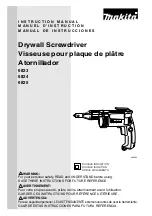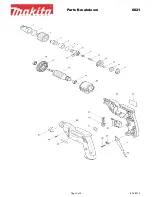
BOP HIPWR 111315
2-9
analysis of each specific application, however, this recommendation can only serve as a general
guideline.
One of the most important considerations in establishing a successful grounding scheme is to
avoid GROUND LOOPS. Ground loops are created when two or more points are grounded at
different physical locations along the output circuit. Due to the interconnection impedance
between the separated grounding points, a difference voltage and resultant current flow is
superimposed on the load. The effect of this ground loop can be anything from an undesirable
increase in output noise to disruption of power supply and/or load operation. The only way to
avoid ground loops is to ensure that the entire output/load circuit is fully isolated from ground,
and only then establish a single point along the output/load circuit as the single-wire ground
point.
The exact location of the “best” d-c ground point is entirely dependent upon the specific applica-
tion, and its selection requires a combination of analysis, good judgement and some amount of
empirical testing. If there is a choice in selecting either the OUTPUT or COMMON output termi-
nals of the power supply for the d-c ground point, both sides should be tried, and preference
given to the ground point producing the least noise. For single, isolated loads the d-c ground
point is often best located directly at one of the output terminals of the power supply; when
remote error sensing is employed, d-c ground may be established at the point of sense lead
attachment. In the specific case of an internally-grounded load, the d-c ground point is automat-
ically established at the load.
The output and common terminals of BOP power supplies are d-c isolated (“floating”) from the
chassis in order to permit the user maximum flexibility in selecting the best single point ground
location. Care must be taken in measuring the ripple and noise at the power supply: measuring
devices which are a-c line operated can often introduce additional ripple and noise into the cir-
cuit.
There is, unfortunately, no “best” method for interconnecting the load and power supply. Individ-
ual applications, location and nature of the load require careful analysis in each case. Ground-
ing a single point in the output circuit can be of great importance. It is hoped that the preceding
paragraphs will be of some assistance in most cases. For help in special applications or difficult
problems, consult directly with Kepco's Application Engineering Department.
2.5.3.1
EARTH-GROUND CONFIGURATION
When connecting a programming device to the BOP it is critical that only a single earth-ground
point is connected. Figure 2-2 shows proper earth-ground connections for typical configurations,
as well as an illustration of the consequences of multiple earth ground points. IF THE FOLLOW-
ING CAUTION IS NOT OBSERVED, ANY DAMAGE TO THE UNIT IS THE USER’S RESPON-
SIBILITY AND IS NOT COVERED UNDER THE WARRANTY.
CAUTION: Never connect the both the load terminal tied to the BOP COM terminal and
the programming device common to earth-ground. This allows a ground
loop current to flow within the BOP which will compromise accuracy. Cata-
strophic damage to the BOP will result if the connection between BOP COM
and the load terminal connected to earth-ground is lost.
Содержание BOP-MG 1KW
Страница 2: ......
Страница 10: ......
Страница 20: ...x BOP 1K 111315 FIGURE 1 1 HIGH POWER BOP SERIES POWER SUPPLY...
Страница 39: ...BOP HIPWR 111315 1 19 1 20 Blank FIGURE 1 3 BOP OUTPUT CHARACTERISTICS...
Страница 40: ......
Страница 56: ...2 16 BOP HIPWR 111315 FIGURE 2 5 PARALLEL CONFIGURATION LOCAL SENSING TYPICAL...
Страница 57: ...BOP HIPWR 111315 2 17 FIGURE 2 6 PARALLEL CONFIGURATION REMOTE SENSING TYPICAL...
Страница 68: ......
















































